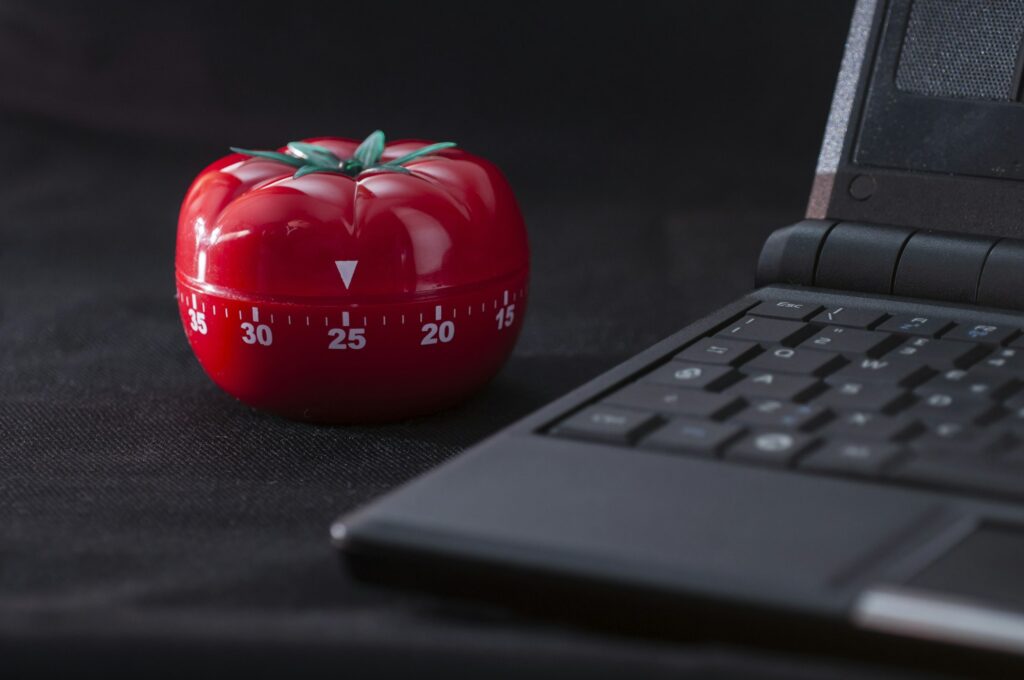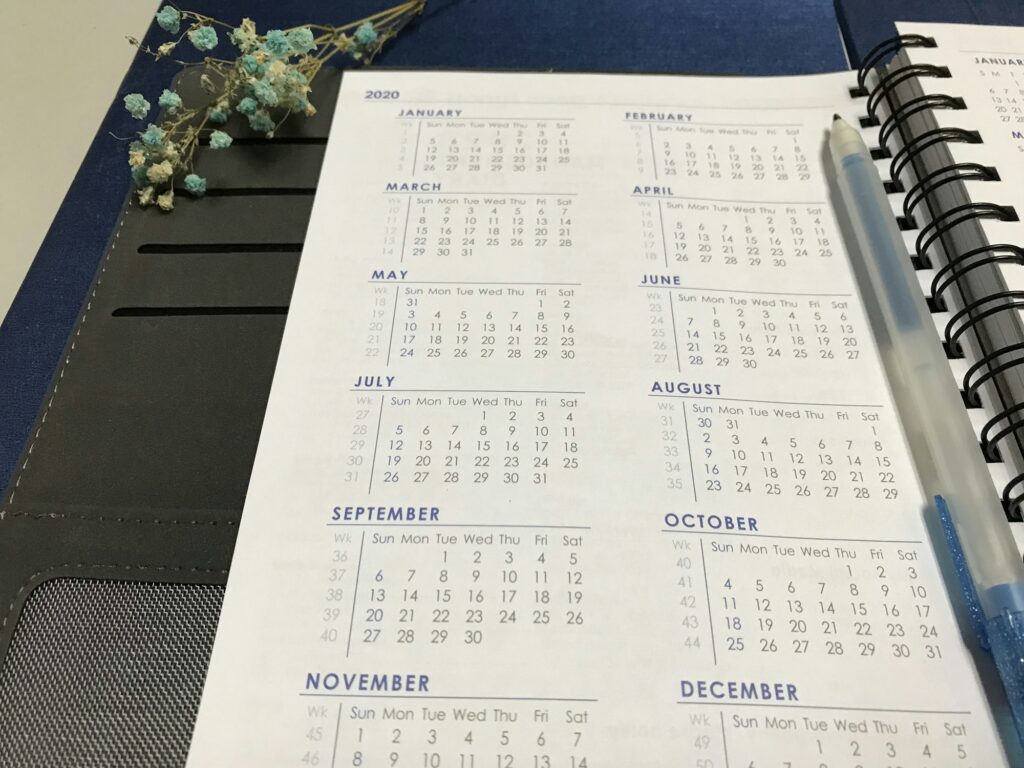
Time is the one resource we all share equally, yet it often feels like there’s never enough of it. Managing your daily schedule effectively can make a world of difference in productivity and peace of mind.
Whether you’re juggling work, family, or personal interests, a well-structured routine can help you stay on top of your game. The trick is finding a plan that suits your unique needs and lifestyle.
“The bad news is time flies. The good news is you’re the pilot.” — Michael Altshuler
Imagine having a day where everything runs like clockwork: you’ve checked off your tasks, met your goals, and even found some downtime for yourself. Sounds like a dream, right? Well, it’s not as far-fetched as it seems.
In this article, we’ll guide you through creating an effective daily time management routine, so you can take control and make every second count. Ready to master your time? Let’s dive in!

Creating an effective daily time management routine starts with understanding your unique rhythms and productivity peaks. Begin by identifying the hours during which you are most alert and focused.
These productive hours are ideal for tackling high-priority tasks. Once you’ve pinpointed these times, it’s easier to strategically plan your day for maximum efficiency.
Time blocking is a powerful strategy that can transform how you manage your day. This technique involves visually scheduling blocks of time on your calendar for specific activities.
Whether it’s checking emails, attending meetings, or deep focus work, allocate dedicated periods for each task. This method not only helps in staying organized but also minimizes procrastination.
The process of time blocking is straightforward yet highly effective. Dedicate ten to twenty minutes every evening to plan the schedule for the next day. Review your task list, calendar, and any planning notes you might have.
Based on this, create a structured timetable with allocated time slots for various tasks. Ensure that you group similar activities together to maintain a steady workflow.
For instance, block out time for all administrative tasks in one go rather than scattering them throughout the day.
When planning your daily routine, don’t forget to incorporate buffer times. These are short breaks between tasks that give you flexibility in case something takes longer than expected.
It’s also wise to estimate your task durations conservatively. Underestimating how long something will take can lead to stress and a backlog of work. Instead, overestimate slightly to give yourself breathing room.
Finally, while it’s important to have a structured schedule, avoid making it too rigid. Life is unpredictable, and sometimes, you’ll need to adjust your plans on the fly. Build in conditional blocks of time for unexpected tasks or changes.
Remember, an essential part of your time management routine is scheduling personal time. Whether it’s for hobbies, exercise, or simply unwinding, allocate minutes or hours in your day for activities that recharge you.
This balance between work and personal time will sustain your productivity and well-being in the long run.
Begin by evaluating your current time management habits. Are you setting realistic goals, or are you overcommitting? The first step toward effective daily time management is to identify where your time is often wasted.
Track your activities for a week to pinpoint your common time traps. Armed with this knowledge, you can start making strategic changes.
Time blocking is a proven method to take charge of your day. By visually scheduling blocks of time on your calendar, you can dedicate specific focus periods for important tasks.
This technique not only enhances productivity but also helps in warding off procrastination. Moreover, group similar tasks into concentrated blocks of time to maintain your workflow and reduce context switching.
Identify your most productive hours. These are the times when you feel most energized and focused. Plan your most critical work during these hours to harness your peak efficiency.
For example, if you’re a morning person, schedule demanding tasks early in the day.
Additionally, incorporating buffer times between tasks can prevent burnout and unexpected delays. These small breaks allow you to recharge and transition smoothly from one activity to another.
Remember, a well-padded schedule is less likely to bankrupt your energy reserves.
Another helpful strategy is to estimate tasks conservatively. Often, tasks take longer than anticipated.
By giving yourself more time than you think you need, you avoid the stress of constantly running late, which can quickly derail your productivity.
Conditional blocks of time can also be a game changer. These flexible blocks act as contingency plans and handle tasks that vary in priority. If a high-priority task suddenly arises, you can adjust your schedule without disrupting your entire day.
Remember that your schedule should not be rigid. Flexibility is key. Adjust your plans as needed and respond intuitively to the demands of the day. Juggling a mix of structured time and flexibility keeps your routine practical and adaptable.

Taming the chaos of a busy schedule can feel overwhelming, but it doesn’t have to be. By implementing a few clever strategies, you can regain control of your day and boost productivity.
In this section, we’ll delve into tried-and-true tips that can make your daily time management routine not only effective but also sustainable.
Multitasking often feels like the best way to get more done, but in reality, it usually results in lower efficiency and higher stress. By doing fewer things and focusing on one single task at a time, you are more productive.
Studies have shown that our brains simply aren’t wired to handle more than one task at a time effectively. When you switch between tasks, it takes time for your brain to adjust, which can lead to mistakes and a lack of focus.
Instead, designate specific periods for dedicated, uninterrupted work on a single task.
This practice, often called ‘time blocking,’ allows you to set aside set times for important tasks, ensuring that high-impact work gets the attention it deserves.
To implement focused work into your daily routine, start by identifying your most productive hours.
Are you more alert and creative in the morning, or do you hit your stride in the late afternoon? Schedule your most challenging and significant tasks during these peak times.
This not only helps in achieving better results but also in utilizing your energy effectively.
Additionally, consider time boxing for less demanding or ‘shallow’ work. Allocating specific blocks of time for routine tasks such as checking emails or organizing files can help avoid these activities taking over your entire day.
Remember, the key is to minimize context-switching and keep your brain in a deep work mode as much as possible.
Embracing focused work over multitasking is about creating an environment where you can immerse yourself fully in what’s really important. By doing so, you take control of your day, reduce stress, and significantly enhance your productivity.
Ever felt like you’re just spinning your wheels, endlessly grinding but not getting anywhere? It might be time to rethink how you’re structuring your day.
Taking regular breaks isn’t just a “nice-to-have”—it’s essential for keeping your brain sharp and your energy levels high.
Studies have shown that allocating time for breaks can significantly improve productivity and creativity.
When you give your brain a chance to pause, you allow it to process and absorb information, leading to better decision-making and problem-solving skills. Think of it as a mini-refresh for your brain.
One popular technique is the Pomodoro Technique, where you work for 25-minute intervals followed by a 5-minute break.
This method leverages the science of short, intense bursts of focus, giving your mind the rest it needs to stay engaged and efficient throughout the day. For every four cycles, take a longer break of 15-30 minutes to truly recharge.
But it’s not just about following a clock. Find what works best for you! Maybe it’s a quick walk outside, a few minutes of meditation, or simply stretching.
The key is to disconnect and allow yourself some mental space. And remember, these breaks are meant to refresh your mind, so avoid scrolling through social media, which can often leave you feeling more drained.
Finally, ensure you’re taking a significant break—like a lunch break—away from your workspace.
This larger block of time helps in significantly resetting your mental state, preparing you for the second half of your day with renewed focus and energy.
Integrating purposeful breaks into your daily routine isn’t a sign of laziness; it’s a strategy for success. By stepping away regularly, you come back more energized and ready to tackle your tasks with clarity and vigor.
It’s a simple yet powerful way to enhance your value and productivity.

Understanding when and how to delegate tasks can be a game-changer for your daily time management routine.
Not everything requires your personal attention; some tasks can be efficiently handled by others, freeing up your time for higher-priority activities.
When you delegate, you share the workload, distribute responsibilities, and empower your team or colleagues to grow their skills.
To start, make a list of tasks that could potentially be delegated. These might include routine activities, tasks that someone else has more expertise in, or smaller errands that take up valuable time.
Once you’ve identified these tasks, choose the right person for each one. Matching the task to the right individual’s skill set is crucial for successful delegation.
Effective delegation not only saves you time but also boosts team morale and productivity. By sharing the load, you create a more efficient and collaborative work environment, allowing everyone to focus on what they do best.
Ensuring you take care of your mental and physical well-being is not just a luxury—it’s a necessity for effective time management. Self-care provides the energy, focus, and resilience needed to handle daily tasks efficiently.
But how do you integrate self-care into your busy schedule without feeling guilty or overindulgent?
Start by recognizing that self-care can take many forms, from proper nutrition and regular exercise to meditation and hobbies that bring you joy.
When you prioritize your well-being, you’re essentially laying a strong foundation for productivity.
Here are some practical tips to incorporate self-care into your routine:
Remember, self-care isn’t selfish—it’s a critical component of managing your time effectively. By taking care of yourself, you ensure that you’re able to give your best in all areas of your life.

When it comes to daily time management, some common pitfalls include underestimating the time needed for tasks, being too rigid with schedules, and overscheduling leisure time.
Many also fail to prioritize their tasks effectively and neglect to account for interruptions. To avoid these mistakes, always pad your schedule with buffer times and estimate task durations conservatively.
Flexibility is crucial, so create conditional blocks of time and avoid overly rigid schedules.
Tracking progress in daily time management can be effectively done through regular reviews and adjustments. Use tools like to-do lists, digital calendars, or time-tracking apps to monitor your activities.
At the end of each day, reflect on what you’ve accomplished, identify any bottlenecks, and adjust your schedule accordingly. Weekly and monthly reviews can also help you recognize patterns and make more informed adjustments.
Flexibility is key when adjusting your daily time management routine. Life is unpredictable, so having a plan B can save you a lot of stress. Regularly review your priorities and be ready to shift tasks as necessary.
Use time blocking to your advantage by reallocating your blocks of time to accommodate changes while ensuring critical tasks get completed.
An effective daily time management routine might include starting your day with a brief planning session, setting aside dedicated blocks for high-priority tasks, and scheduling regular breaks to maintain focus. For example:
This balance ensures you tackle your most important tasks during your peak productivity hours while maintaining flexibility for less critical tasks.
Balancing work and personal life requires clear boundaries and a well-structured time management routine. Start by defining specific work hours and personal time, and stick to them.
Make use of time-blocking techniques to allocate dedicated time for work, family, self-care, and hobbies. Ensure you include breaks and leisure activities in your schedule to prevent burnout and maintain a healthy work-life balance.
Your daily time management routine is more than just a schedule—it’s a commitment to prioritizing what truly matters. By incorporating these strategies and tips into your daily life, you’ll find yourself more organized, productive, and at ease.
Remember, effective time management is not about cramming more tasks into your day but about making the best use of your time to achieve meaningful results.
Regularly reflect on your progress and be flexible enough to make adjustments. Tools like Fantastical and Todoist can help you stay on track, and don’t forget the benefits of conducting a weekly end-of-week review.
By carving out time for deep work and ensuring you end each day on a positive note, you’ll create a sustainable routine that supports both your professional and personal goals.
Ultimately, ask yourself, “What will I be proud of having done when I leave work today?” This simple question can guide your focus and drive your productivity.
So, take the first step today, experiment with your routine, and watch how effectively managing your time transforms your life.


